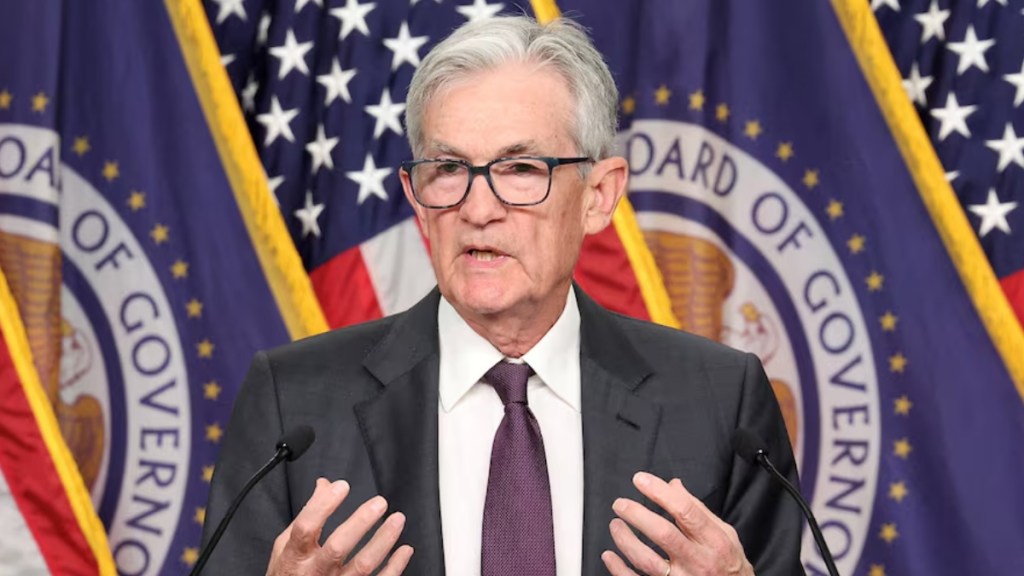Federal Reserve Chair Jerome Powell reaffirmed the central bank’s focus on reducing inflation on Tuesday, emphasising that policymakers are not in a hurry to lower interest rates.
Speaking before the Senate Banking Committee, Powell described the U.S. economy as “strong overall,” highlighting a “solid” labor market and inflation that, while easing, remains above the Fed’s 2% target. Given these conditions, he indicated that there is no immediate need to adjust monetary policy.
“With our policy stance now significantly less restrictive than it had been and the economy remaining strong, we do not need to be in a hurry to adjust our policy stance,” Powell said. “We know that reducing policy restraint too fast or too much could hinder progress on inflation. At the same time, reducing policy restraint too slowly or too little could unduly weaken economic activity and employment.”
Powell’s testimony marked the first of two appearances on Capitol Hill this week, with another session before the House Financial Services Committee scheduled for Wednesday. While monetary policy was a key topic, much of the discussion revolved around bank supervision.
Sen. Elizabeth Warren, a Massachusetts Democrat, criticized former President Donald Trump’s decision to halt the work of the Consumer Financial Protection Bureau, arguing that it left consumers vulnerable to misconduct by major banks. When Warren asked Powell who, outside of the CFPB, was overseeing consumer compliance, he responded, “I can say no other federal regulator.” However, he maintained that the broader banking system remains secure.
On monetary policy, Powell’s remarks aligned with previous statements from Fed officials, who are navigating a complex economic landscape. One major factor is Trump’s push to impose tariffs on major U.S. trading partners—measures aimed at addressing trade imbalances and enforcing foreign policy objectives related to illegal immigration and fentanyl trafficking.
Although Powell did not mention tariffs in his prepared remarks, he was expected to face questions on the issue. He reiterated that fiscal policy decisions, including trade measures, fall outside the Fed’s jurisdiction.
“I think the standard case for free trade and all that logically still makes sense. It didn’t work that well when we have one very large country that doesn’t really play by the rules,” Powell said. “In any case, it’s not the Fed’s job to make or comment on tariff policy … That’s for elected people and and it’s not for us to comment. Ours is to try to react to it in a thoughtful, sensible way and make monetary policy so that we can achieve our mandate.”
Recent Fed signals have led markets to expect that interest rates will remain unchanged at least through the summer. This follows a full percentage-point cut in the latter part of 2024. Powell suggested that the current policy stance, with the federal funds rate set between 4.25% and 4.5%, provides flexibility. The Federal Open Market Committee left rates unchanged at its late-January meeting.
“We are attentive to the risks to both sides of our dual mandate, and policy is well positioned to deal with the risks and uncertainties that we face,” he said.
Shortly after taking office, Trump called for immediate rate cuts, but later said he supported keeping rates steady. Treasury Secretary Scott Bessent also suggested that the administration is more concerned with lowering the 10-year Treasury yield than with the Fed’s short-term rate decisions.
Despite Fed rate cuts, mortgage rates have remained high—a trend Powell acknowledged but attributed to long-term bond yields rather than central bank policy.
“It’s true that mortgage rates have gone or remained high, but that’s not so directly related to the Fed’s rate,” Powell said. “It’s really related more to long-term bond rates, particularly the Treasury, the 10-year Treasury, 30-year Treasury, for example. And those are high for reasons not particularly closely related to Fed policy.”
He added that mortgage rates could decline as the Fed keeps rates low, but he could not predict when that might happen.

